Umami and Dashi Gain Foothold on the New York Palate Vol.1
Exploring Umami in a source of food culture, Brooklyn
2015.12.05
| ![]() 日本語(Japanese) |
日本語(Japanese) |
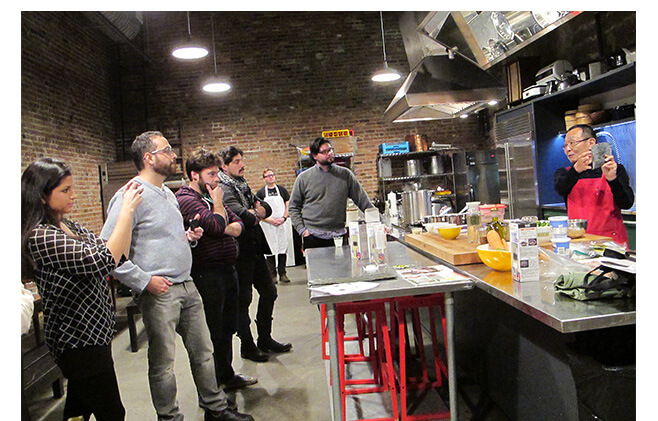 |
The popularity of Japanese food is growing in New York. Sushi has become a staple in supermarkets and delis, and words such as Kaiseki, Izakaya and Ramen have entered into the culinary vernacular.
Based on the number of popular votes in restaurant guide Zagat’s 2014 New York edition, the respect Japanese food is receiving is evident. 48,114 New Yorkers voting on over 2,084 restaurants resulted in an average score of 23.87 for Japanese cuisine (a perfect score being 30). French food came just behind with a score of 22.08, and Japanese was awarded the highest score in 100 categories of cuisine introduced in said restaurant guide. Moreover, in the Michelin Guide to New York City 2014, one out of seven three-star restaurants, one out of five two-star restaurants, and 10 out of 55 one-star restaurants were Japanese establishments, accounting for quite a large percentage.
"Umami" is now listed in the dictionary and can often be seen in publications such as "Food & Wine" and "Time" as a new buzzword. No longer a specialized term, it is now a keyword that chefs use to differentiate their cooking.
In New York, where interest in umami and dashi stock is increasing, Kiyomitsu Kitajo of Tenma Osaka Kombu Co., Ltd., known for hit product "Kombu Kakumei” (literally “kelp revolution,” which is kelp cut into short lengths), visited the well-known source of food culture Brooklyn where he held a class entitled "Exploring Umami: Kombu Dashi" in January of this year. The venue was the "Brooklyn Kitchen", a purveyor of cooking utensils and food, frequently visited by gastronomists. Store owner Harry Rosenblum also consults on matching quality small-scale farmers producing Japanese-related food with American retailers. The class was given a chance to put knowledge into practice with the support of Yuko Suzuki, president of Office Musubi, promoting activities that connect Japanese farm producers with overseas markets.
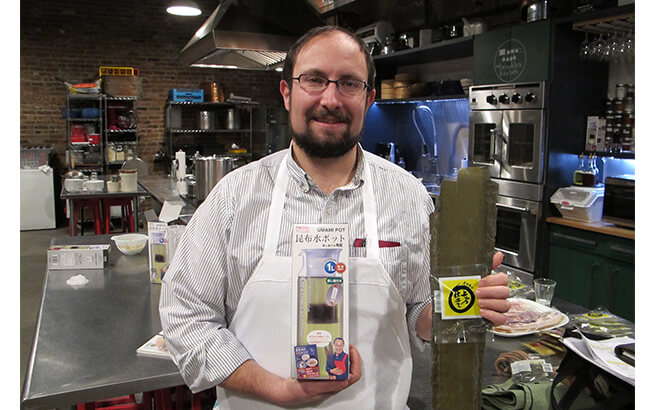 |
The owner of "Brooklyn Kitchen", Harry Rosenblum, hosting the Umami class |
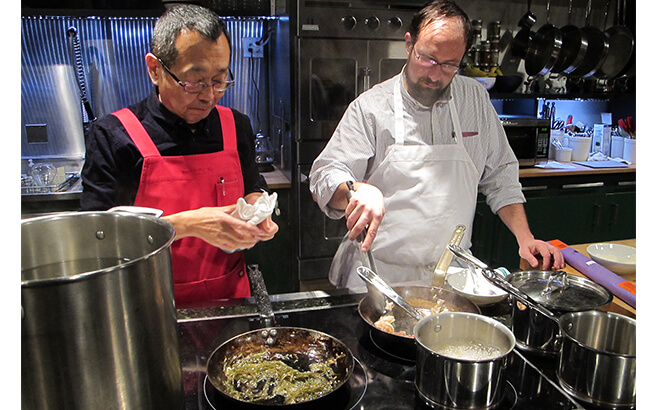 |
Kiyomitsu Kitajo of Tenma Osaka Kombu, preparing kelp pasta with Harry Rosenblum |
Participants included five chefs and three gastronomists. Kitajo first explained the basics about the constituents of umami and kelp, and explained the versatility of kelp in cooking through a demonstration and tasting session. The tasting included dashi soup on its own, a comparison between rice cooked using dashi and water, a sampling of kelp used for dashi soup which has been pickled in olive oil, soy sauce and honey, and finally a pasta utilizing kelp pickled in olive oil, garlic and chili pepper.
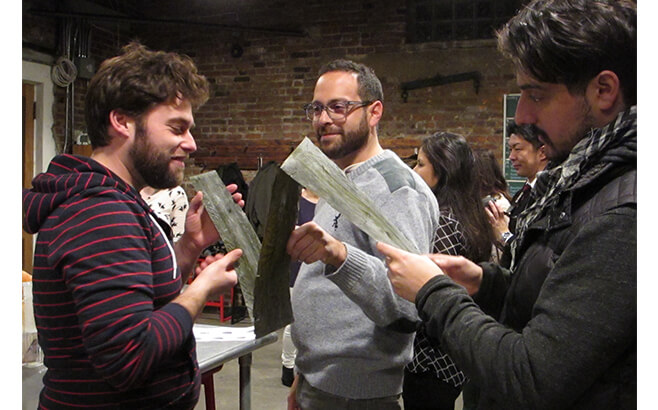 |
Participants holding kelp |
One participant, freelance chef Evan Corn, commented, "I was already familiar with Japanese dashi, but I had never thought of using dashi dregs for cooking. For example, dregs pickled in honey were unexpectedly delicious, with a rich flavor. I could easily incorporate them into desserts." And Michael Cirino, a chef of the "a razor, a shiny knife" group, which plans new eating experiences through a variety of dinner events, suggested including carbonation in kelp dashi, saying "Liquid often becomes richer in flavor when carbonated, with a more mineral flavor. I would love to try it with kelp dashi." He then proceeded to make carbonated kelp dashi with equipment at the venue and tasted it with other participants, stating "I want to try to make a cocktail using this with gin and adding cucumbers." His New York-style culinary free-association left quite an impression on the gathering.
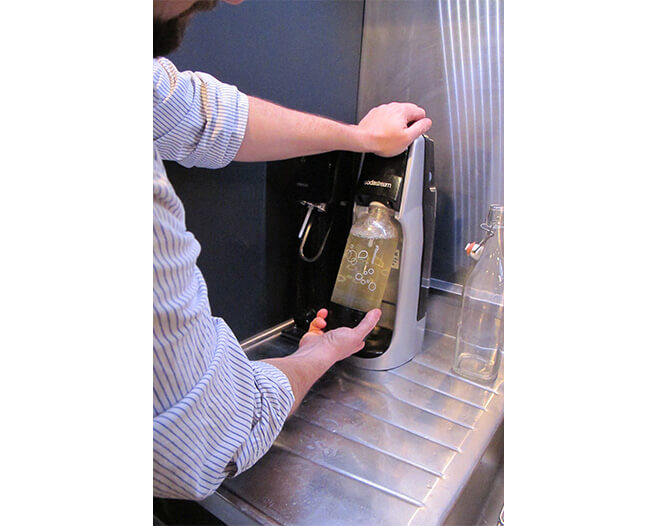 |
Carbonation of kelp dashi soup |
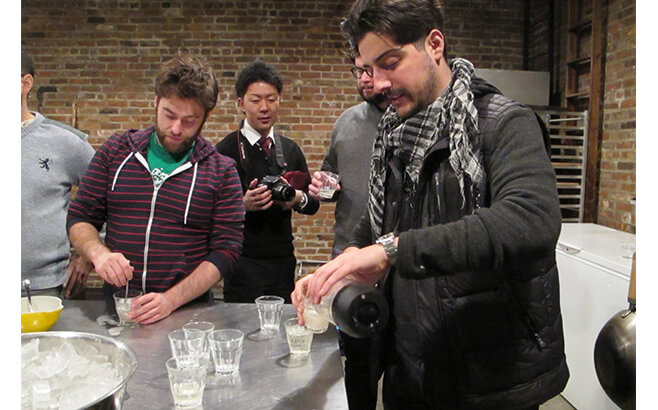 |
Michael Cirino tasting carbonated kelp dashi |
Michael Anthony, head chef of popular New American restaurant "Gramercy Tavern" said, "Umami is rapidly turning the heads of chefs here in the U.S. as an element of taste which was unknown until now. I think the unique flavors generated from natural ingredients such as kelp, dried bonito, mushrooms and tomatoes and their inherently healthy nature (compared to salt and sugar) will be adopted in the new American dietary lifestyle from here on out."
In Vol. 2, we will report on chefs in New York, including Michael Anthony, who are incorporating umami and dashi into their creations.
Text and photographs by Akiko Katayama / English translation by Yuko Wada and Sean Gaston |
| ||
| ||









